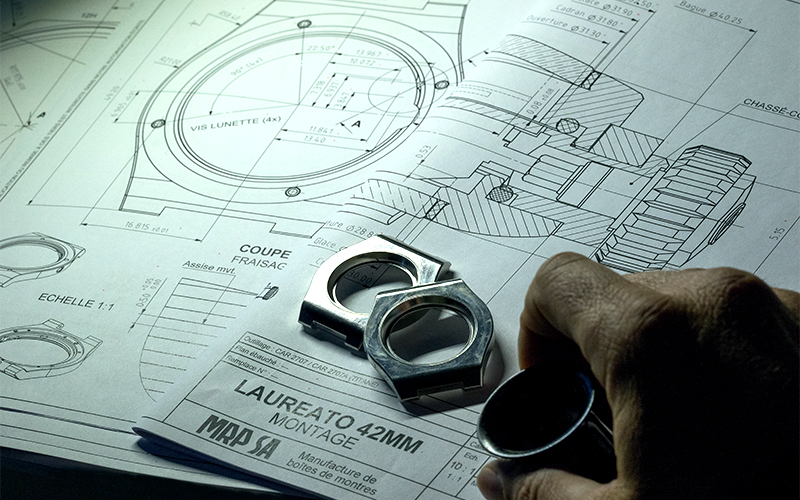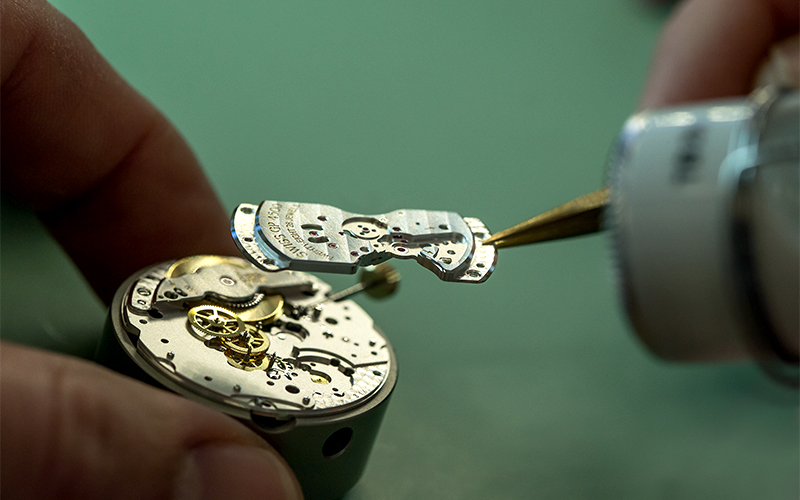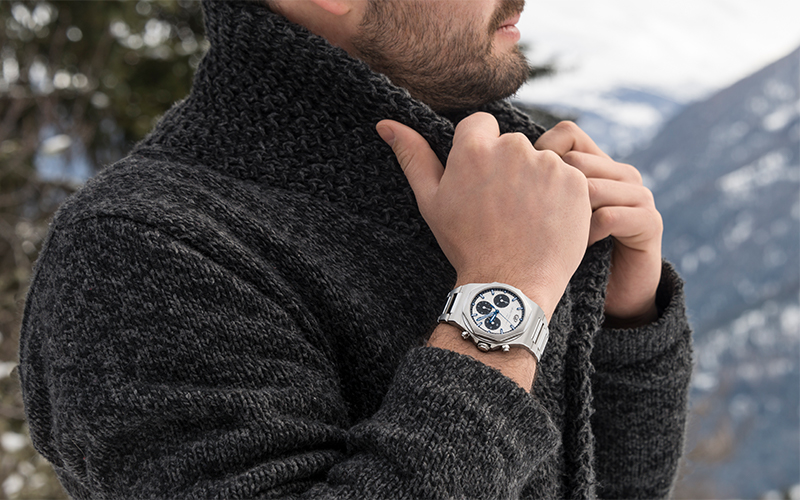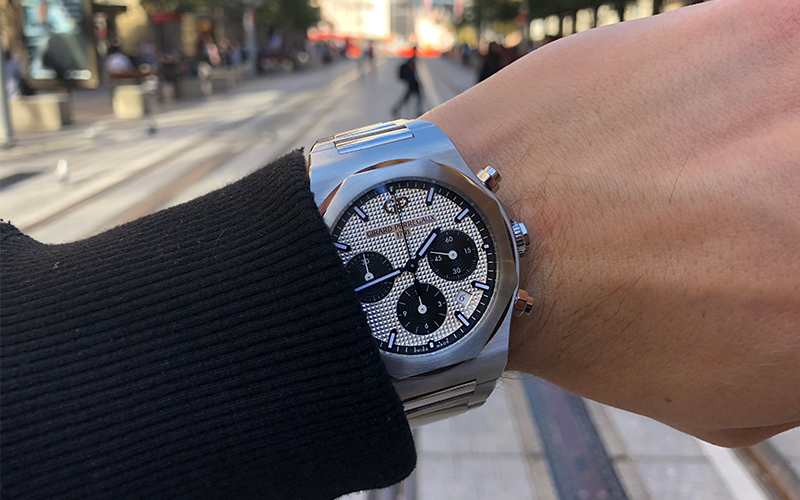New Watch! • 27 Jul 2018
Hands-on with the Girard-Perregaux Laureato Chronograph
The recently revived Girard-Perregaux Laureato is a powerful “new old” collection, headlined by the Laureato Chronograph, a challenger to the established luxury-sports offerings. Available in 38mm or 42mm, steel or gold, and a host of color options from the get-go, the Laureato aims to please the sort of watch buyer already knows his personal preferences in styling.
While the new Laureato is, well, new, the model has a long history. Girard-Perregaux first launched the Laureato in 1975 as a two-tone, three-hander powered by a quartz chronometer caliber – a watch that was cutting edge 1970s in style and tech. At the suggestion of Girard-Perregaux’s Italian distributor, the watch was named after the 1967 film The Graduate, or Il Laureato in Italian.
Notably, the Laureato was launched three years after the Royal Oak, but a full year before Patek Philippe or IWC got on the bandwagon of steel luxury sports watch with the Nautilus and Ingenieur SL respectively.

And unlike its three notable contemporaries, the Laureato was not the work of prolific watch designer Gerald Genta, rather it was conceived by a now anonymous architect from Milan. The original sketches for the Laureato reveals architectural references as its sources of inspiration, including facades and domes, and an almost mathematical precision in the distribution of the visual weight of its components. The thin, octagonal bezel with its rounded base sits neatly on a substantial, but elegantly curved base, into which the horizontal links integrate seamlessly.

After some years of hibernation, Girard-Perregaux re-introduced the Laureato in 1995. It adapted the watch for prevailing tastes, and also to incorporate its very own self-winding GP3100 movement, by slimming down the Laureato. It was at this time that today’s H-shaped bracelet links – more modern than the original – were also introduced. But the fine balance between the slender but complex octagonal bezel, case and tapering bracelet was maintained.

Quirky but cool pieces dedicated more avant-garde styling followed, including the EVO3 of 2003, and the crazily cool Laureato Tourbillon with Three Sapphire Bridges a few years later.

Today’s Laureato came to market in 2016, with a modestly beefed up case and bracelet, while retaining the signature style and wearability. The Laureato then gained extra momentum last year with the launch of the Laureato Chronograph.

The new Laureato still keeps its signature bezel, a defining feature but one that tends to appear more obvious in pictures than in real life. Unlike with its rivals, the Laureato’s bezel isn’t the be-all and end-all, rather it adds character to an already unique case. The case shape is further accentuated by the contrast between the highly polished base of the bezel and its gently satin-finished top.
Surface textures are also a feature of the dial, which is decorated with clous de Paris, or hobnail, guilloche that gives the dial depth. Color options range from a blue-to-blue, as well as a more traditional black-on-silver “panda”, though the most strikingly unusual is the dark blue dial with black sub-dials. The hands and hour markers are finished in vibrant blue but filled with Super-Luminova for legibility.

While the Laureato Chronograph is available in two sizes, and the larger 42mm is the obvious choice for a sports watch, the 38mm version is a proposition that’s often missing from the usual luxury sports watch offerings. While smaller versions of large watches often lose their finer details, the Laureato 38mm is a medium-small size case, but dressed up with exceptional details that give it the presence of a large watch.
Girard-Perregaux has done an exceptional job at keeping both sizes equally appealing, which leaves more room for the smaller variant to shine since its rivals in this space are mostly large. And the 38mm, thanks to its size and weight, is also more comfortable, something that is a more natural fit for most wrists.
But the 42mm version does have an ace up its sleeve. Unlike nearly all its peers, Girard-Perregaux went through the trouble of putting a larger movement in the 42mm case, to maintain the stellar proportions of dial and case. Relying on the same movement as in the 38mm version would have left a gap between the chronograph registers and bezel. The 38mm model is powered by the GP03300 base movement with a chronograph module on top, and the 42mm has the same base movement but a different, larger module. This minor but crucial detail indicates the degree of attention Girard-Perregaux has lavished on the watch.

Click here to discover more of Girard-Perregaux watches.







